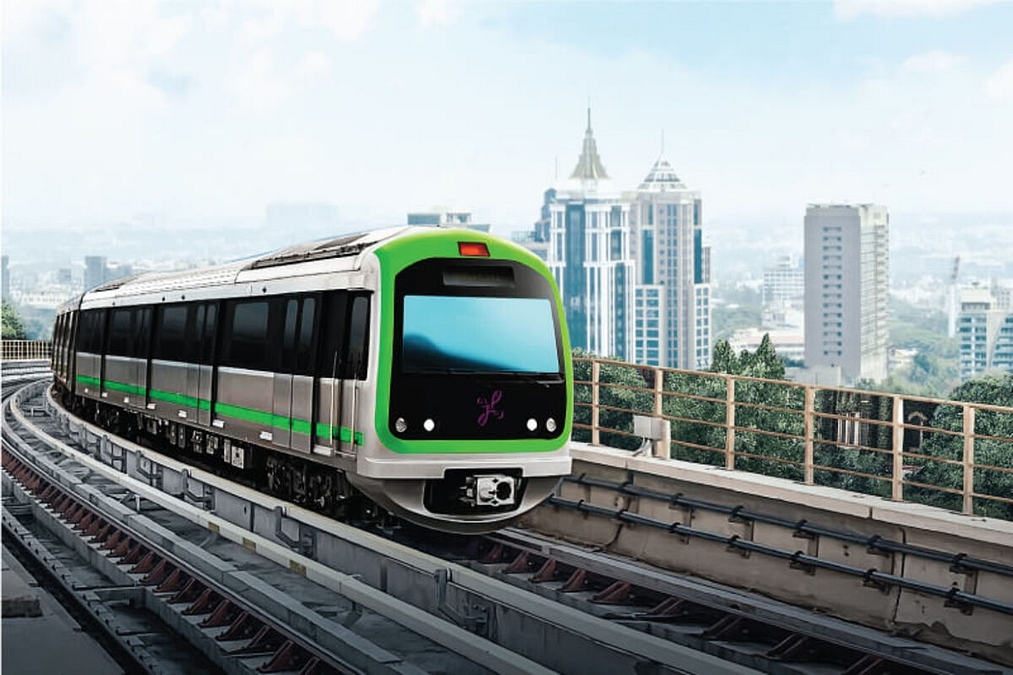BMRCL Green Promise Faces Delay Amid Land Constraints
In the face of rapid urban expansion and significant infrastructural development, Bengaluru’s Tree Plantation Programme has hit a stumbling block. The Bangalore Metro Rail Corporation Limited (BMRCL), responsible for one of the largest metro construction projects in India, is yet to meet the compensatory planting norms mandated for the trees it felled between March 2021 and December 2022. The agency’s recent quarterly report (April–June 2024) reveals that while BMRCL was required to plant 61,010 saplings as compensation for the trees cut down during this period, only 23,280 saplings have been planted so far—leaving a staggering 62% of the required compensatory plantation still unfulfilled.
The trees felled in various parts of the city for metro construction, particularly in heavily congested areas like Kodibeesenahalli, KR Puram, and Kempegowda Layout, have been replaced at a slower pace than expected. While plantation work is still underway, geo-tagging, a necessary step to ensure that each sapling is accounted for, has not been completed. Environmentalists have expressed concern over the delayed timeline, stressing that such large-scale compensatory efforts should have been completed long ago to prevent further damage to the city’s green cover.
BMRCL’s Struggle with Urbanisation and Space Scarcity
One of the main reasons cited by BMRCL for the delay in plantation is the ongoing scarcity of open spaces within Bengaluru’s city limits. Officials have pointed out that at least one acre of land is required to plant 150 saplings, and with the city’s rapid urbanisation, finding such large, open areas has become increasingly difficult. Traditionally, land parcels for such projects were provided by the Bruhat Bengaluru Mahanagara Palike (BBMP), but as the BBMP now utilises its land for other urban projects, such as the afforestation of lakes and green spaces, BMRCL has found itself struggling to secure land.
In an attempt to address this, BMRCL has approached the Karnataka High Court, which has allowed them to expand their plantation efforts into the Bengaluru Metropolitan Region Development Authority (BMRDA) limits, which offer more availability. The agency has also resorted to using land from the Bangalore Development Authority (BDA), the Karnataka Industrial Areas Development Board (KIADB), and other industrial parks. However, experts argue that planting 20,000 saplings would require at least 200 acres of open land, a challenge that’s increasingly becoming insurmountable.
Sustainability Concerns and the Need for a Comprehensive Solution
The delay in compensatory plantation is not merely a logistical issue but one that highlights the broader challenge Bengaluru faces in balancing development and environmental sustainability. As the city grows, the ecological footprint continues to expand, with vital green spaces shrinking in the wake of concrete structures and urban expansion. This puts added pressure on the city’s air quality, biodiversity, and overall ecosystem health, making efforts like compensatory plantation even more crucial for the long-term sustainability of Bengaluru.
Sustainable urban planning demands that compensatory planting be more than just a statistical exercise; it must be part of a larger strategy to ensure the resilience of Bengaluru’s green cover. In this context, tree activists and environmentalists have suggested alternative solutions, including roadside plantations and the Miyawaki method of dense, small-scale forests. There’s also the possibility of utilising land recovered from encroachments as an ideal site for these saplings. This not only solves the space issue but also helps in reclaiming public land for ecological purposes.
However, experts are quick to point out that the location of these plantations matters just as much as their scale. Planting trees far from the original sites of deforestation—up to 45 kilometres away—defeats the purpose of compensatory planting. Ideally, saplings should be planted near the locations where trees were felled to restore the local ecosystem as much as possible. This remains a significant oversight not just by BMRCL but by other agencies tasked with compensatory planting across the city.
A Call for Integrated Urban and Environmental Planning
Bengaluru’s tree plantation efforts highlight the city’s broader challenge of reconciling its growth with sustainability. The issue is not just one of planting trees but ensuring that these efforts are integrated into the city’s urban planning strategy. Urban growth cannot proceed without the parallel growth of green spaces, and as Bengaluru continues to expand, it must focus on long-term environmental sustainability.
The city’s future lies in its ability to adopt innovative, scalable solutions to address both its infrastructural needs and its environmental responsibilities. By harnessing smart urban planning, including utilising recovered encroached lands and incorporating green spaces into new developments, Bengaluru can not only meet its compensatory plantation targets but also secure its status as a sustainable urban model for other rapidly developing cities in India.




